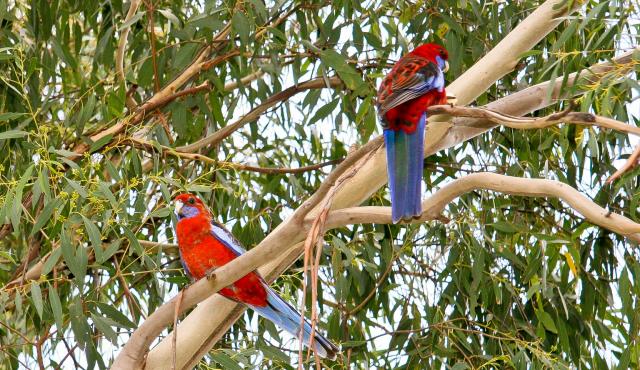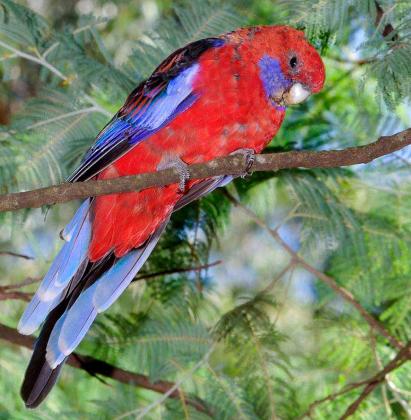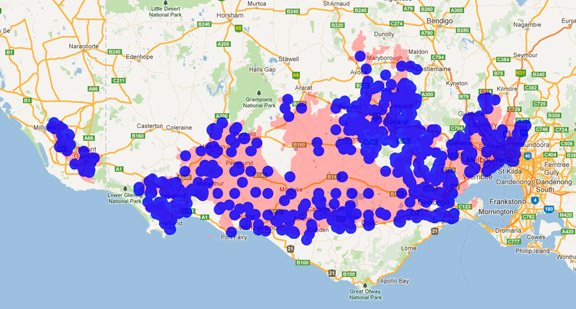A range of teacher professional learning programs will be developed to accompany the Biodiversity of the Western Volcanic Plains online outreach...




Crimson Rosella
Platycercus elegans
Breeds September-January. Nests in tree hollows. The female incubates 4 to 8 eggs for 20 days. Both sexes care for the young. The chicks remain dependent for 35 days after leaving the nest. Yellow birds hybridize with red birds to produce orange offspring.
| Details | Description |
| Type | Bird |
| Group | Parrot |
| Other Common Names | Red Lowry |
| Identifying Characteristics | |
| Distinctive Markings | Characteristic blue cheeks in all varieties. |
| Diet | Omnivore. Feeds on the seeds of eucalypts, grasses and shrubs. Will also eat some insects and tree blossoms. |
| Habitat | Commonly associated with tall eucalypt and wetland forests. Also includes heavy wet forests, inland river belt trees and mallee areas. |
| Native Status | Native to Australia |
| Sounds | Clear, ringing "k - tee - tip, k - tee - tip". |
| Taxonomy | |
| Phylum | Chordata |
| Class | Aves |
| Order | Psittaciformes |
| Family | Psittacidae |
| Genus | Platycercus |
| Species | elegans |

Distribution maps indicate current and historic locations where species have been sighted.
Source: Atlas of Living Australia
| Conservation Status | |
| DEPI Advisory List | Not listed |
| FFG Act | Not listed |
| EPBC Act | Not listed |
The conservation status of species is listed within Victoria and Australia.
The Department of Environment and Primary Industry (DEPI) Advisory List consists of non-statutory advisory lists of rare or threatened flora and fauna within Victoria.
The Flora and Fauna Guarantee Act 1988 (FFG Act) lists threatened species in Victoria. Under the Act, an Action Statement is produced for each listed species.
The Environment Protection and Biodiversity Conservation Act 1999 (EPBC Act) is the Australian Government’s key piece of environmental legislation, listing nationally threatened native species and ecological communities.



